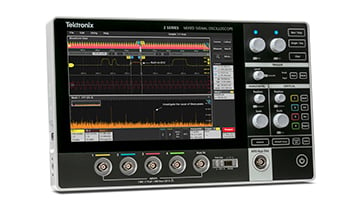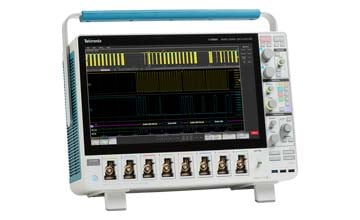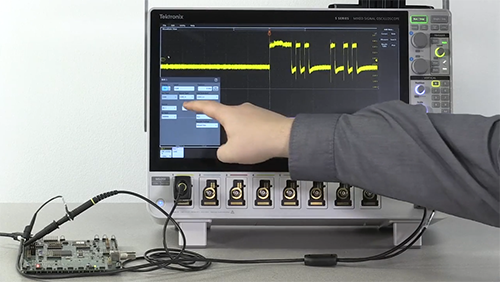Contact us
Call us at
Available 9 AM - 5 PM CET Business Days
Download
Download Manuals, Datasheets, Software and more:
Feedback
Debugging ECUs with Automated Decode & Trigger
What is the CAN bus?
The Controller Area Network (CAN) is a bus structure originally designed for automotive applications, but it has also found its way into other areas. The CAN bus is a balanced (differential) two-wire interface running over different types of cables depending on the application. Several different data rates are defined by the standard with 1 Mb/s being the fastest for CAN. The more recent variant, CAN FD (Flexible Datarate), has increased transmission speeds up to 10 Mb/s, while also increasing the package payloads data field max length. To maintain signal quality, the bus requires 120Ω termination resistance at each end of the cable to ensure impedance matching.
Since its introduction in the 1980’s CAN bus has been used to transfer data between electronic control units (ECUs) and with vehicle sensors.
CAN bus in the connected car
The amount of data, generated, transmitted, and received in automobiles has increased significantly in recent years, and will continue to rise in the future. Today, many automobiles contain more than 80 Electronic Control Units (ECUs), which are connected via different bus networks. In the years to come, we expect this number to exceed 100 as some luxury cars are already using 150 ECUs.
Greater integration between vehicle subsystems means that, in addition to handling sensor and actuator signals, many ECUs communicate over more serial buses at a time. For example, it is very common for an ECU to communicate over both CAN (for critical systems) and LIN (for lower-priority controls, such as windows and mirrors).
Troubleshooting with a CAN bus decoder and other tools
Because the safety of the driver relies on these systems communicating properly, it’s essential to ensure a CAN bus is configured properly. Fortunately, CAN bus decoding and troubleshooting CAN bus issues is easy when you have the right CAN bus decoding tools, such as a mixed signal oscilloscope. In this short guide, we’ll cover troubleshooting tips and the instruments you need to accomplish the task quickly.
CAN Bus Decoding, Triggering and Searching
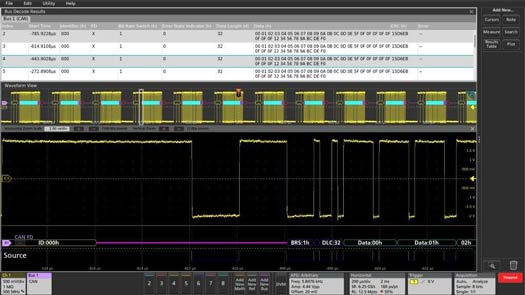
CAN FD signal on Channel 1 being decoded and displayed as a bus waveform (bottom) and event table (top).
Debug the decoded CAN bus protocol
Decoding serial bus protocols manually is time-consuming work, and it is easy to make mistakes. Tektronix’s automotive bus decoding and triggering packages provide straightforward, automated decoding and triggering for popular ECU buses like CAN, CAN FD, LIN and FlexRay.
Troubleshooting Signal Faults
CAN bus protocol decoding is just the beginning. Troubleshooting problems when a bus doesn’t work, or worse, works intermittently, goes beyond the bus traffic and into the realm of signal integrity.
Often these problems, emanating from signal integrity issues in the physical layer like crosstalk, noise, and improper termination, are most effectively detected through waveform analysis.
An oscilloscope allows the engineer to examine the analog bus waveforms to evaluate signal quality and noise, as well as study multiple signals to look for interactions and identify crosstalk.
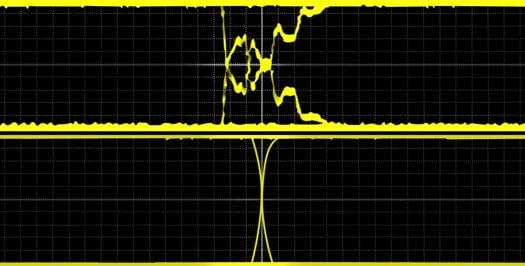
The CAN bus requires 120 Ω termination. An unterminated bus will result in poor signal quality (upper signal).

ECUs communicate via CAN, LIN, and other buses, and directly with sensors and actuators.
Visualizing Multiple Channels/Sensors/Actuators
With the complexity of the multi-bus and multi-sensor/actuator systems it’s often difficult to get an overview of the working environment.
Most of Tektronix’s scopes allow the user to view multiple buses and control signals simultaneously. Mixed signal oscilloscopes enable the use of digital channels for bus decoding, freeing up analog channels for evaluating signal quality. The 5 Series MSO is especially good at providing visibility into complex ECUs, thanks to its high channel-count, FlexChannel inputs, and large HD display.
Frequently Asked Questions
What is a CAN bus decoder?
A CAN bus decoder is a device that can interpret the signals sent over a Controller Area Network (CAN) bus, which is a communication network used in modern vehicles and other complex systems. The decoder can extract information such as speed, RPM, temperature, and other data transmitted over the CAN bus.
What is the benefits of using a CAN bus decoder?
A CAN bus decoder can provide real-time access to important data transmitted over the CAN bus, which can be used for various purposes such as diagnostics, performance tuning, and data analysis. It can also help detect and diagnose problems with the vehicle's systems and components, allowing for faster and more accurate troubleshooting.
How does a CAN bus decoder work?
A CAN bus decoder works by intercepting the signals transmitted over the CAN bus and decoding the data packets using specialized software. The decoder can then display the data in a user-friendly format, making it easy to interpret and analyze.
What kind of data can be decoded using a CAN bus decoder?
A CAN bus decoder can extract a wide range of data transmitted over the CAN bus, including engine speed, throttle position, vehicle speed, coolant temperature, fuel level, and more. The specific data that can be decoded will depend on the make and model of the vehicle and the type of CAN bus decoder being used.
Can a CAN bus decoder be used with any vehicle?
A CAN bus decoder can be used with most modern vehicles that use a Controller Area Network (CAN) bus. However, compatibility may vary depending on the make and model of the vehicle and the type of CAN bus decoder being used. It's always best to check the manufacturer's specifications before purchasing a CAN bus decoder.
Are there different types of CAN bus decoders?
Yes, there are several different types of CAN bus decoders available on the market, ranging from simple handheld devices to more advanced software-based systems. The specific type of decoder that's best for you will depend on your needs and the complexity of the data you need to extract from the CAN bus.
Can a CAN bus decoder help improve vehicle performance?
Yes, a CAN bus decoder can be used to monitor and analyze vehicle performance data, which can help identify areas for improvement and optimize the vehicle's performance. For example, it can help fine-tune the engine's performance by adjusting fuel and ignition timing, or identify areas of the vehicle that are causing drag and increasing fuel consumption.
How do I setup CAN bus decoding?
Setting up your CAN bus decoding tool of choice is easy. Visit this link for steps and a video on how to set up a CAN bus decoder using a Tektronix oscilloscope as an example.



